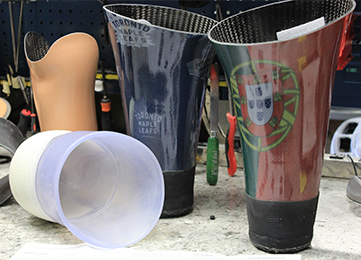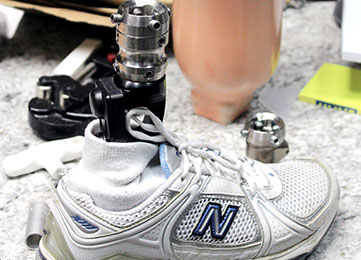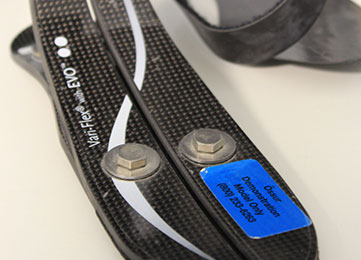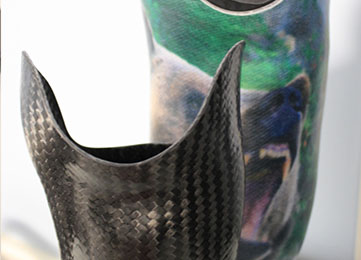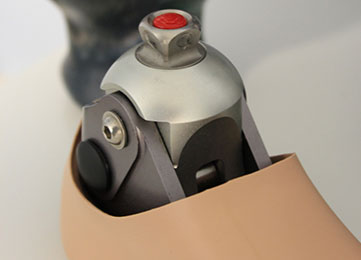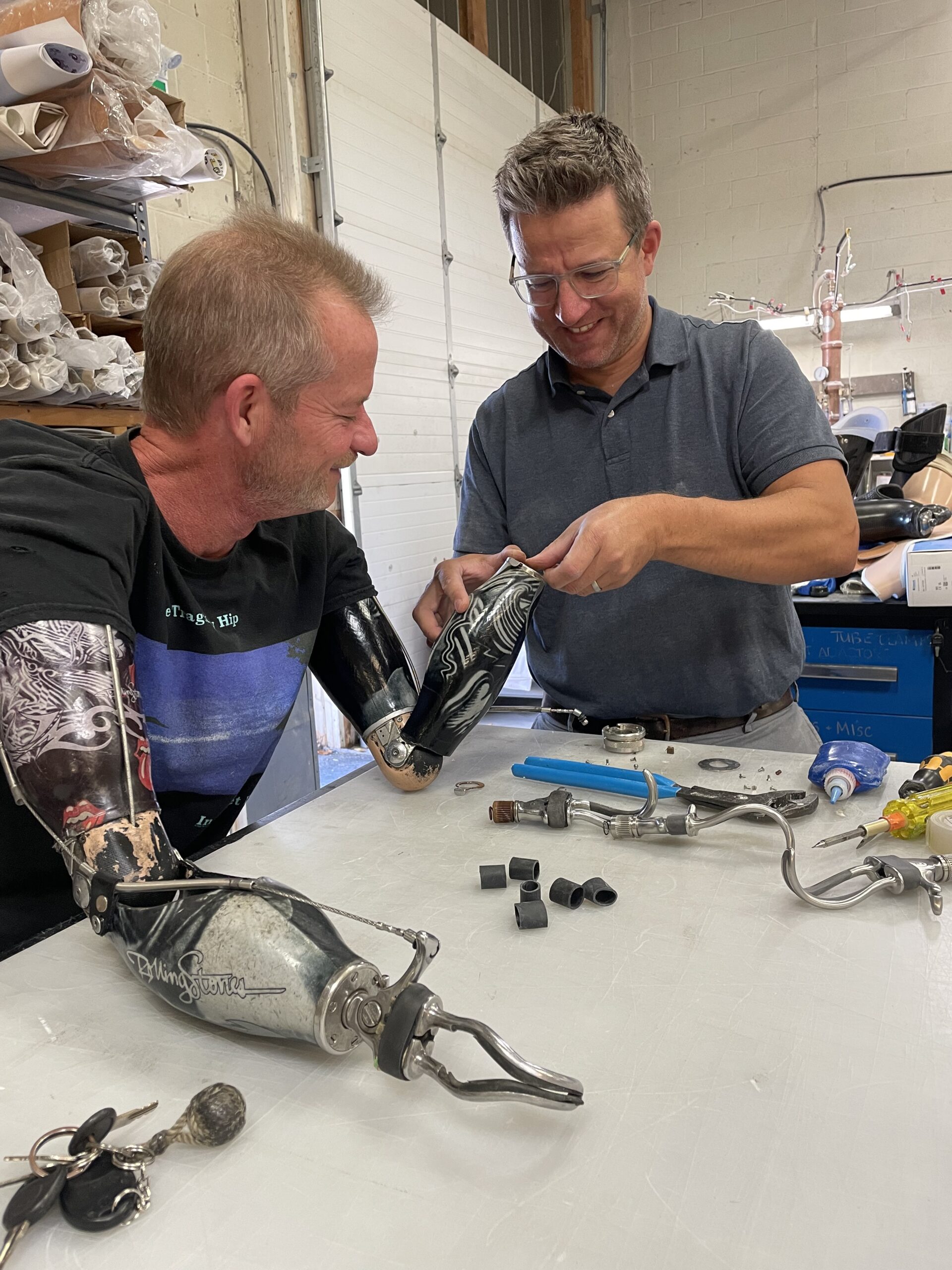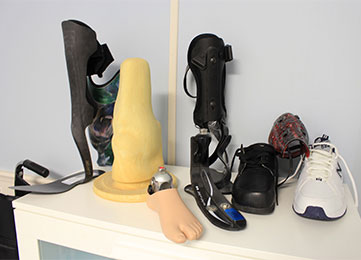Prosthetics

About Prosthetics
Our Certified Prosthetists are highly trained, skilled professionals with experience in the evaluation, design and fabrication of prostheses for patients who have experienced some type of limb loss or deformity.
At DP&O we pride ourselves on always being on the leading edge of all advancements in the field of Prosthetics and providing the optimal patient care to ensure these advancements are applied correctly for each patient.
A Prosthetist specializes in the assessment of the amputees needs and the design of custom-made prosthesis. We work to interface artificial limbs with the human body utilizing many skills such as biomechanics, anatomy and physiology.
Modern prosthetic limbs have advanced newer materials like plastics and carbon-fiber composites. These make your prosthetic limb lighter, stronger and more realistic. Electronic technologies make today’s advanced prosthetics more controllable, even capable of automatically adapting their function during certain tasks, such as gripping or walking.
Because each patient and his or her amputation are unique, each prosthetic limb must be custom designed and then fabricated. The prosthetist and doctor also meet before the prosthetic treatment to discuss ideal patient outcomes (sometimes patients meet with the Prosthetist for a pre-operation consultation).
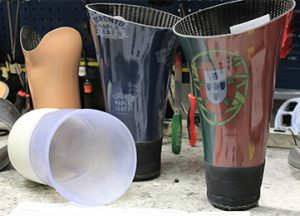
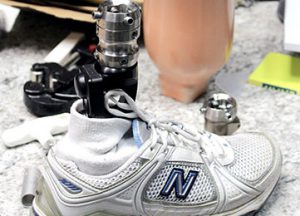
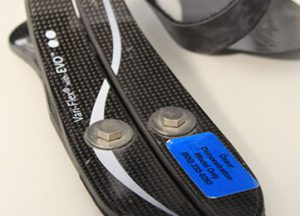

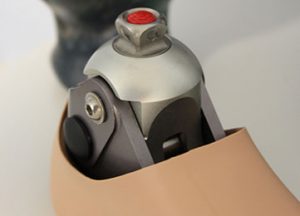
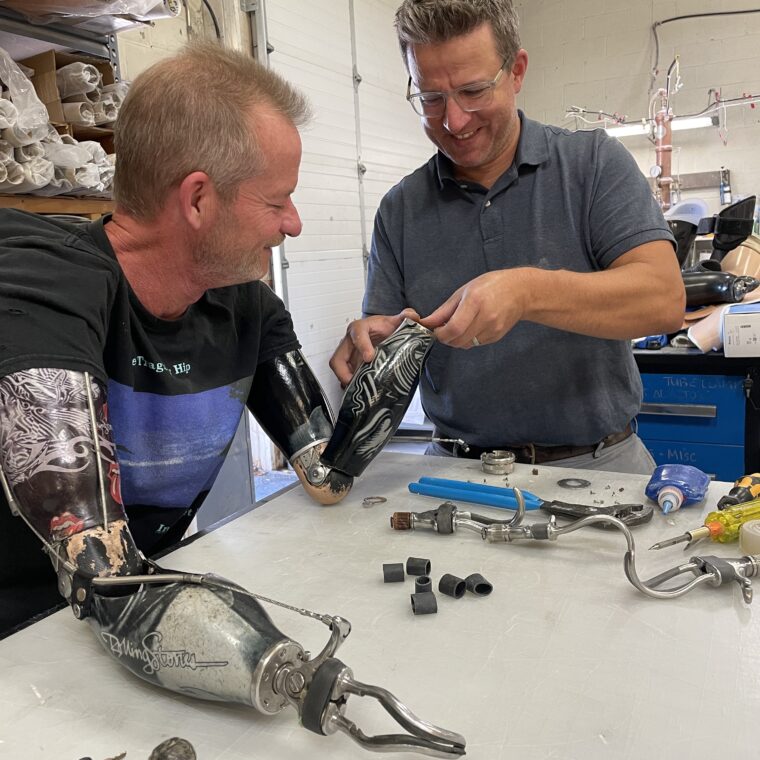
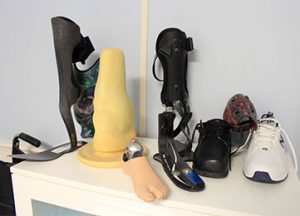
The design and fabrication process consists of several different steps and begins with a precise measurement process later used to design the prosthetic limb. If possible, a prosthetist begins taking measurements before the patient’s limb is ready for prosthetic intervention, so that the fabrication process can get started. For example, detailed measurements of the patient’s body are taken to help correctly size the prosthetic limb.
Powered Technology – Lower & Upper Extremity
With advances in computer and robotics technology, the next step in true limb replacement has begun with the advancement of powered prosthetic components. Products such as the Power Knee from Ossur and the BioM ankle-foot complex from BioM have pushed lower limb prosthetics forward. The i-Limb from Touch Bionics and the MichelAngelo for Otto Bock continue to advance the field of upper limb myoelectric prosthetics. At DP&O we understand that powered prostheses are the next step in approaching true limb replacement – and we are making sure we provide patients with access to improved technologies and treatments!
Microprocessor Knees & Ankles
Another widely used technology is the use of computers to control knees and ankles during the gait cycle. This differs from powered technology, as the knees only ensure correct positioning during the gait cycle and do not actually generate power. However, this technology is applicable to a wide range of patients, as it increases both function and safety. Products such as the C-leg and Genium from Otto Bock, the Rheo Knee and Proprio Ankle from Ossur and a host of other products are creating a revolution within the Prosthetics industry.
Prosthetics Technology is Taking a Leap Forward
As has always been the case, advancements in Prosthetics are directly connected with advancements in many areas. At DP&O we pride ourselves on always being on the cutting edge of all advancements in the field of Prosthetics.
Elevated vacuum or Sub-atmospheric Socket Technology
Socket-patient interface is the most important factor in positive prosthetic outcomes. This socket-patient interface is influenced by a number of different factors, one of the most important is suspension, or how the prosthesis is held on. A relatively recent advent in socket technology has improved this suspension dramatically. The use of both mechanical and electronic vacuum pumps in conjunction with various socket designs has improved socket comfort dramatically for all activity levels! Products such as the Unity system from Ossur, the LimbLogic system from WillowWood, the E-pulse system from Otto Bock and many others have created a new wave in socket design which is helping to optimize socket comfort and prosthetic performance.

